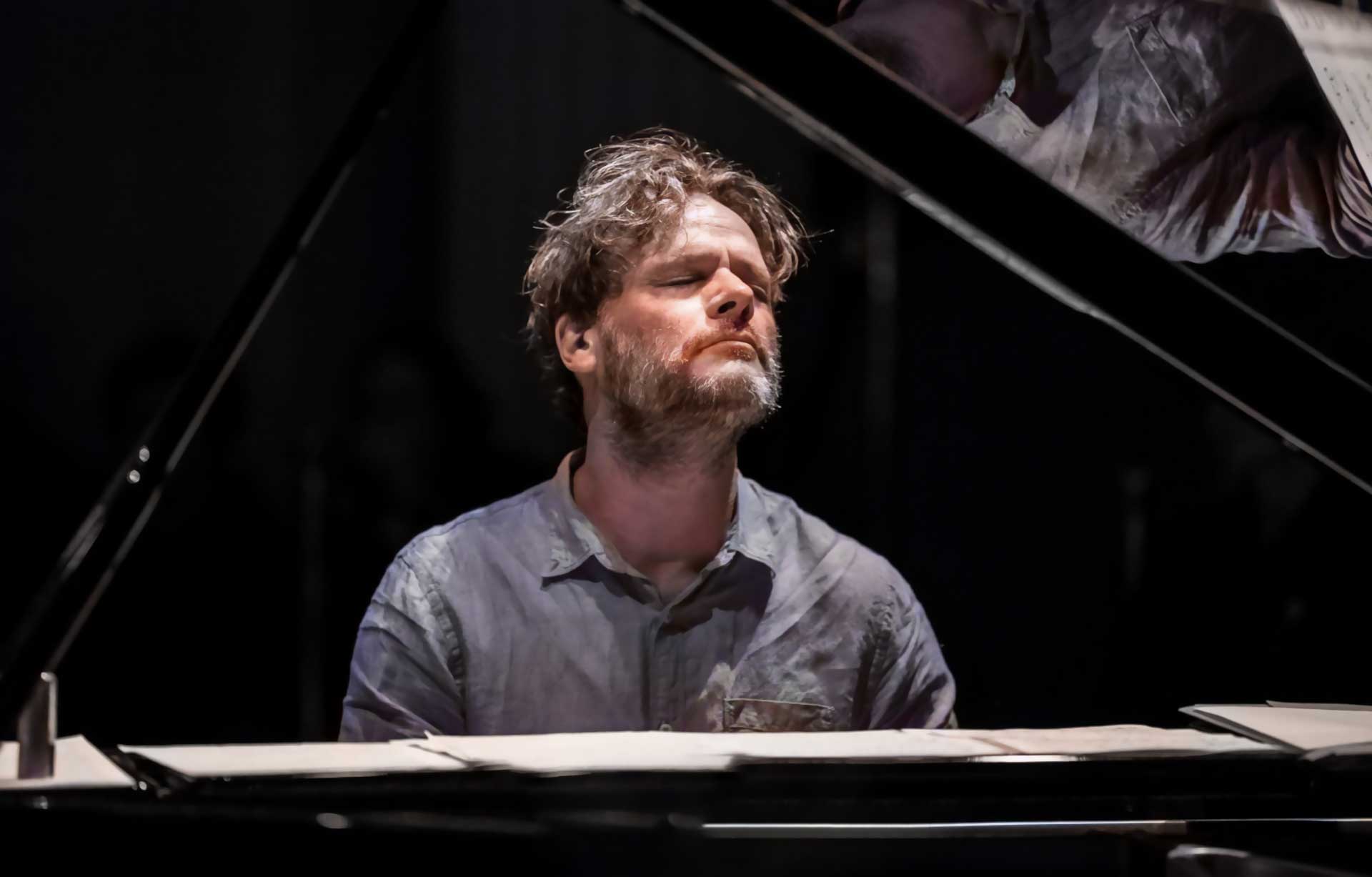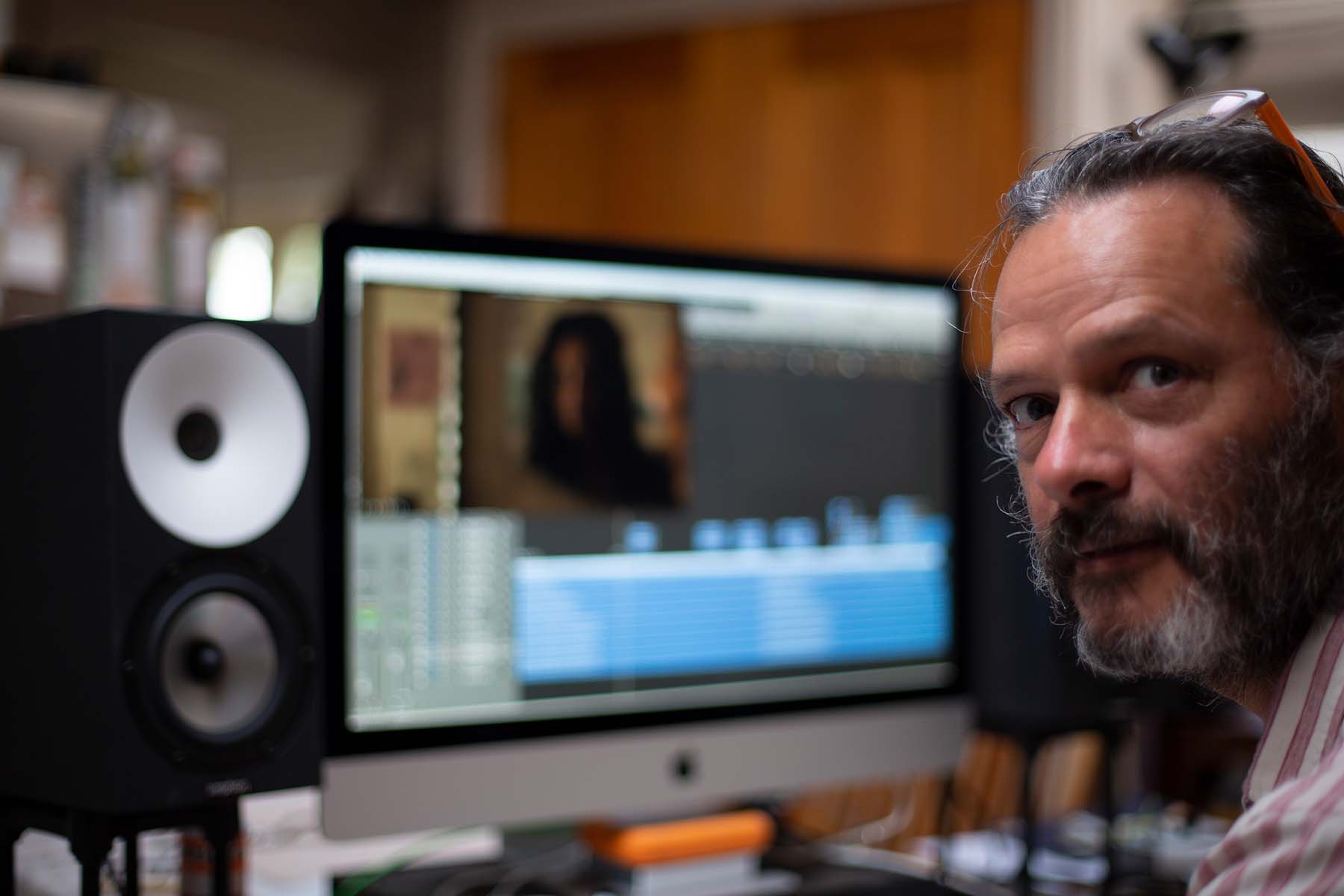Jonathan Crayford on Amphion One15’s stability, surety, and clarity when tracking and mixing for film
Award winning pianist, multi-instrumentalist, and film composer from New Zealand speaking on his current works and his approach to creating vivid soundscapes for film and television.

Auckland, New Zealand – Considered one of New Zealand’s foremost jazz pianists, Jonathan Crayford’s original approach to composition has seen him work extensively on film soundtracks, albums, and with bands. Immersing himself in the European, Cuban, Brazilian, and the New York scenes, Jonathan has performed with many notable musicians, honing his talent over the years in the genres of Jazz, Latin Jazz, Funk, and Classical music. He has worked with the likes of Kurt Rosenwinkel, David Binney, Mambo Macoco, Groove Collective, David Murray, Tony Allen, Questlove, Macy Gray, Bobby Carcasses, and many other international greats. We were intrigued by the plethora of excellent testimonials used to describe Jonathan’s creative power – particularly drawn by this statement from the site of one of the world’s top Jazz blogs – as well as the desire to showcase and celebrate the creative vibe of artists from Aotearoa …
“He’s an artist embedded so deeply within his music that his persona reflects in those terms. It’s as if he were the embodiment of sonic shapes and forms.” ~ John Fenton, jazzlocal32.com
Jonathan credits both our New Zealand Pro-Audio Distributor, Nigel Russell of Oceania Audio, and Amphion Loudspeakers for their support with his recent projects: “I’m writing a new score currently for a TV Mini-series about the ‘Polynesian Panthers’ and am happy to be using the Amphion’s again. I love them and they really help a lot. I have used them for several film projects now.”

Here, Jonathan is referring to the iconic 1970’s activist group that fought for the rights of Pacific Islanders and Maori, and his part in a new project for television to expand upon the story and legacy of the Pasifika community. We asked Jonathan to share with us some recent/past soundtracks where Amphion’s were part of his creative arsenal, as well as give us some insights into the creative thinking and collaboration processes of a screen-music composer in developing and recording a film or television music score. Films with socio-political statements are not the only thematic works Jonathan commits his compositional talents to. Quirky comedies – in the nature of a Guy Ritchie/Tarantino-esque type – are also fertile grounds to showcase his creative mind. From now, we hear directly from Jonathan Crayford …
For the comedy “Lowdown Dirty Criminals” score (LDC Trailer below), I used quite standard instrumentation (mostly funky grooves), but I did write an epic ‘Western’ style theme that was richly orchestrated. In all of these cases, the Amphion’s have really provided a stable and assured tracking and mixing environment which I can rely on, and the results have been obvious once I have delivered the various scores. This film was mixed at Park Road Post by Michael Hedges who I have enjoyed working with over the years. Knowing that he was mixing it somehow made a difference to how I wrote – which seems strange – but he’s a very humorous guy and a brilliant engineer. Scoring for me means that once I start, I don’t stop until I have finished – everything else goes on hold and I dive very deeply in, living and breathing the project. You get things done a lot quicker this way – which was what was required with LDC. That score was a mixture of Spaghetti Western and R&B and a tiny bit of orchestral stuff. I’m a pianist principally, and a bass player, and I’ve fooled around with drums, percussion, and a bunch of wind and brass – which has been very useful especially in terms of handling arrangements or orchestrations. I also put piccolo strings on one of my basses (a Fodera which I bought from First Flight Music Store in NYC when I lived there in the 90s) which lifts the register an octave, and this is a really useful instrument for scoring in its own right, and also as a place holder for any guitar parts I may want to add if I bring musicians in to record or just to play melodies from.
Lowdown Dirty Criminals (2020) | Dir.: Paul Murphy | Mus.: Jonathan Crayford – Lowdown Productions, NZ.
“The Garden Of Evil” (GOE Teaser below) was a very different film – a feature documentary about the Amazon Rainforest and the death of Peter Blake who was doing environmental work on the Amazon at the time. It was filmed on the Amazon, and in and around Macapa – a river city in Brazil. A lot of the footage is shot with drones over the forest, prison, or city – both very beautiful and ugly – and shows the underbelly of wildlife trafficking and deforestation, and some of the work environmentalists are doing.
Often when I start a new project, especially a film, I will sit quietly for some time in order to find the point of view the score will have, and it’s not always easy. I don’t think I’m quite there yet with my current project – which is a mini-series for TV – but for GOE, it occurred to me that as the Amazon rainforest are the lungs of the Earth I should try to think and feel like a tree. This meant that I wrote from a very solid and still place which was vulnerable – this thought affected everything, and I completely re-configured my studio to suit. I live in a pretty small house and most of it is piano. I remember when Larry Keating first told me about the project, a piece of music formed in my head as he was talking – and this is always a good sign. I went home and composed and recorded it as a simple piano piece which I sent to Larry that day thinking “Well, if that’s in the right direction we can go from there”. That piece is in the film. I also wrote a lushly orchestrated main theme that to my mind speaks of the cycle of destruction – it’s a cyclic piece, of course, and every time it comes around it builds in momentum until finally crashing into the inevitable last chord.
However, once I had the thought about the “tree thing”, I moved the piano out and replaced it with a forest of homemade instruments made out of wood and metal, a Fender Rhodes, a clavinet, and a bank of effects pedals – the main one being an El Nano Freeze. I had also contacted Nigel Russel from Oceania Sound sometime earlier and asked what the best studio monitors would be for my work, and he replied, “Try the Amphions”. When I picked the Amphions up from Nigel, he also gave me an instrument from Indonesia – a small set of 8 tuned bamboo pipes that you shake to produce a very beautiful and resonant woody sound. I pulled it apart so that I could just shake individual notes and that sound became integral to the score. So, to explain this instrumentation, my thought was to play a single chord on the Rhodes and freeze it. Then I would subtly modulate the sound of it with the bank of effects so that it wasn’t static and locked but breathed, and the effects I mostly used were a Moogerfooger ring-modulator, a Red Panda particle delay, and the beautiful reverb delay pedal the Context. I also used an amazing looper delay from Montreal Assembly, the Count to 5. I then layered up other tracks, percussion, clavinet (unrecognisable), bass, and piccolo bass. Sometimes I’d use the Dave Smith Rev 2. In this manner, I wrote ambient tracks that had a very strong overall mood, and this is what predominantly scores the film.
The edit took a year, and this was partly because of CoVid and partly because it was the producer’s process and contrary to what I have mentioned about enjoying ‘working fast’, this seemed to really suit this film. I don’t think I would have been able to write that score if I had had to work fast, as the whole “tree thing” required consideration, slow but sure. I really enjoyed that, and I went into the mix armed with many additional tricks up my sleeve – mostly spare tracks. I made a percussion ensemble out of an empty oil can, some lengths of kwila (a hard wood), and other similar homemade instruments. I wanted to explore the sound of wood in the way we are used to hearing it in our daily lives but fail to really notice – the sound of a table or a door or a wooden ruler – these aspects of wood being in our lives, but we don’t notice them, and we don’t think about where it comes from or more importantly, that we are destroying it. I wanted to bring the awareness of a tree into the forefront. What also worked very well were industrial sounds – metal clanging etc. I asked my nephew working in different film’s workshop to cut me some lengths of copper pipe and to bend a large triangle out of a piece of stainless-steel pipe I had. These sounds were good too.
This film was mixed at the Department of Post in Auckland and I also had a very good time with Alex Chalcoff the mixing engineer there. We created a lot of stuff in the pre-mixes. One of my favourite cues is for the end credits (always tricky as you don’t know how long they are going to be) where I combined a slow pulsing string piece with the oil can ensemble – two very different pieces of music in different tempos yet they both worked together in their different ways. To me that was reflective of the jungle and civilisation – or ‘tribal’ people and ‘civilised’ people – needing to coexist but not homogenise. The Amphion’s were especially good for GOE as I was experimenting with new textures and often delicate sounds. The two very thin pieces of Kwila rubbed together produced a sound that had a natural phasing to it and was like a wooden ruler moved up and down on the edge of a desk. Yes, the beautiful crisp detail of the Amphion’s really helped. I’m totally used to them now and the other artists/engineers I know who use them are saying the same things.
More information about Jonathan Crayford, please visit: www.jonathancrayford.com
More information on the Amphion One15
For more information on Amphion in New Zealand, contact oceaniaaudiosales.co.nz